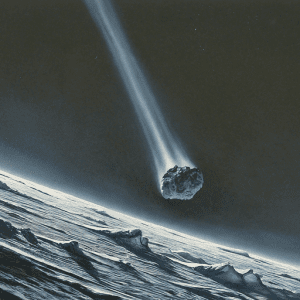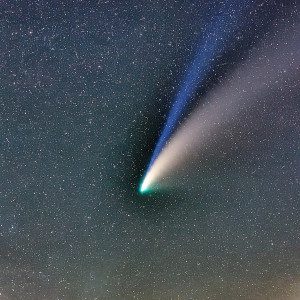Comet 12P/Pons-Brooks is a long-period Halley-type comet that orbits the Sun every 71 years. It has several unique properties that have intrigued astronomers over the decades, including its striking deep red color and elongated cigar-shaped nucleus.
Discovery

Comet 12P/Pons-Brooks was independently discovered by two astronomers, Jean-Louis Pons from France in 1812, and William R. Brooks from the United States in 1883. This is why it bears both of their names. It was identified as a periodic comet and designated 12P once the link between the 1812 and 1883 observations was established.
Orbit and Trajectory
The comet has a highly elliptical orbit around the Sun, with an orbital period of about 71 years. At its closest approach to the Sun (perihelion), it reaches as close as 0.78 astronomical units (AU), which is between the orbits of Earth and Mars. But at its farthest point from the Sun (aphelion), it extends out to 17.2 AU, beyond the orbit of Uranus.
When passing through the inner solar system, Comet 12P/Pons-Brooks spends most of its time in the northern celestial hemisphere. It will next reach perihelion in April 2024, offering an opportunity for observation from Earth.
Physical Properties

12P/Pons-Brooks stands out for its unusually deep red color. This reddish hue is believed to be caused by complex organic materials on the comet’s surface that have been altered by cosmic radiation during its long journey in the outer solar system.
The comet also has an elongated, cigar-shaped nucleus about 10 km long. This is larger than the nuclei of most other comets. However, 12P develops only a faint coma and tail around its nucleus when near perihelion, unlike most comets which exhibit more extensive comae and tails.
Meteor Shower
The comet is the parent body of the kappa Draconid (κ-Draconid) meteor shower. When the comet passes through the inner solar system, the Earth crosses the comet’s orbital plane and encounters the dust trail left behind by the comet. This produces a meteor shower on Earth as the dust grains burn up in the atmosphere.
2024 Approach & Observation Opportunities
Comet 12P/Pons-Brooks will make its next perihelion passage on April 23, 2024. It will approach within 0.65 AU of Earth in late April 2024, potentially becoming bright enough to see with the naked eye under dark skies. There is also a total solar eclipse occurring on April 8, 2024, providing a unique chance to try and observe the comet near the eclipsed Sun.
Currently, in February 2024, the comet is at a distance of 1.8 AU from Earth, in the constellation Lacerta. It has an observed magnitude of 7.2, requiring binoculars or telescopes for viewing. As it approaches perihelion over the coming months, the comet is expected to rapidly increase in brightness and develop more extensive coma and tails, providing more opportunities for observation.
Conclusion
Comet 12P/Pons-Brooks is certainly one of the most perplexing periodic comets observed by astronomers. While we have learned much about its properties and origins over the past two centuries, this mysterious visitor from the depths of the solar system still holds many secrets.
Each time 12P returns to the inner solar system approaching its blazing perihelion with the Sun, scientists eagerly study it, searching for new clues that may unravel its hidden mysteries. What is the origin of its strange deep red hue, unlike any other known comet? What causes its oddly elongated, almost cylindrical nucleus? And why does it not develop a long, active tail and coma at perihelion like its sibling comets?
As Comet 12P/Pons-Brooks approaches Earth once more in 2024, emerging from the dark, frozen expanse of the outer solar system, astronomers will be watching closely. Perhaps this will be the return that finally reveals the comet’s innermost secrets after so many decades of mystery.
Yet we can be sure that this cryptic comet will continue to guard many enigmas. Some questions may remain unresolved as 12P recedes again into the distant darkness, not to be seen again for another 71 years. But when it comes hurtling by Earth in the year 2095, our more advanced observation technologies may finally uncover the hidden truths of this perplexing cometary vagabond that has captivated our imaginations for over two centuries of celestial discovery.
The intriguing story of 12P/Pons-Brooks is not over yet. There are surely more twists and surprises to be revealed about this strange comet in future years by intrepid astronomers seeking to unravel its enduring mysteries…

